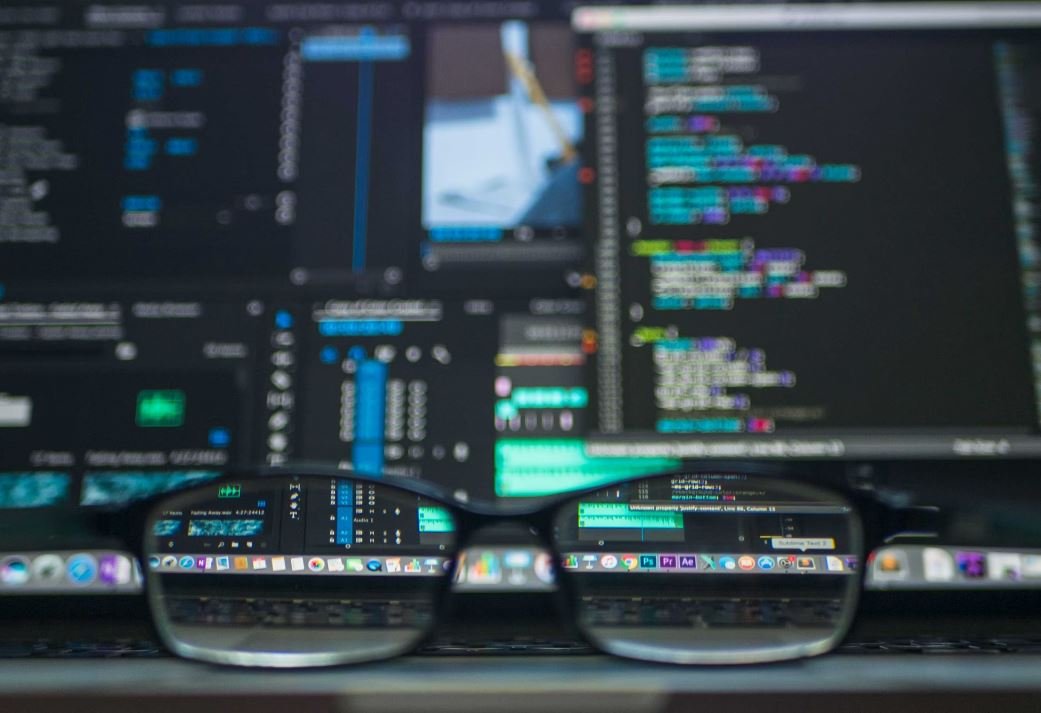Footage Meaning in English
Footage is a term commonly used in the field of photography, videography, and cinematography, referring to the raw, unedited, and continuous sequence of images or video captured by a camera. This term has become increasingly popular, particularly in the digital age, due to the widespread accessibility of recording devices and the ease of sharing media content.
Key Takeaways:
- Footage refers to unedited sequences of images or video captured by a camera.
- It is commonly used in photography, videography, and cinematography.
- Footage can be raw and continuous, lacking any post-production modifications.
- Metadata can be embedded within the footage for organizational purposes.
The **footage** captured by a camera can encompass various events, scenes, or subjects, which can range from personal experiences to professional films. This unedited and raw footage provides the foundation for further processing and editing in the post-production phase.
*Footage* is often categorized based on its content, such as documentary footage, wildlife footage, or surveillance footage, to name a few examples. Each category serves a specific purpose and requires different techniques and equipment for capturing the desired shots.
The Importance of Metadata
Metadata plays a crucial role in managing and organizing footage effectively. It refers to the information embedded within the footage, providing important details about the content, such as the date and time of capture, location, camera settings, and more. Metadata enables easy searching, sorting, and retrieving of footage based on specific criteria, making it an invaluable tool for professionals.
*In some cases, metadata can even include details about the people or objects present, which can further enhance the usability and discoverability of the footage.*
Categories of Footage
Footage can be categorized into various types depending on its purpose and application. Some common categories include:
- Stock Footage: Pre-recorded footage available for licensing, often used in films, commercials, and other creative projects.
- B-Roll Footage: Additional footage captured, usually used to provide context or visual variety.
- Archival Footage: Historical footage that captures significant events or the past, often used in documentaries or educational programs.
Tables
| Category | Description |
|---|---|
| Stock Footage | Pre-recorded footage licensed for various creative projects. |
| B-Roll Footage | Additional footage used to provide context or visual variety. |
| Archival Footage | Historical footage capturing significant events or the past. |
| Advantages | Disadvantages |
|---|---|
| Provides a starting point for creating polished final content. | Lack of organization may lead to difficulties in managing large quantities of footage. |
| Allows for experimentation and creative exploration during the editing process. | The sheer amount of footage can result in longer editing times. |
| Offers a visually compelling way to preserve memories and document events. | Requires proper storage and backup solutions to prevent footage loss. |
| Camera Type | Maximum Recording Time |
|---|---|
| DSLR Camera | Varies depending on the camera model and storage capacity. |
| Camcorder | Can range from a few hours to several days, depending on the settings and storage capacity. |
| Smartphone | Varies depending on the device and available storage. |
As technology advances, the possibilities and applications for capturing footage continue to grow, whether for personal, professional, or artistic purposes. *The use of footage in visual storytelling allows individuals to convey emotions, perspectives, and stories in a powerful and engaging manner.*

Common Misconceptions
1. Footage always refers to videos
One common misconception is that the term “footage” only refers to videos. While it is true that footage is commonly used to describe video recordings, its meaning is not limited to that. The term can also apply to photographic or film material, such as images or scenes captured on camera.
- Footage can pertain to images as well as videos.
- It can encompass both digital and analog formats.
- Footage is not limited to professional recordings but can include personal ones too.
2. Footage and film are synonymous
Another misconception is that “footage” and “film” are interchangeable terms. While they may be related, they are not synonymous. “Film” typically refers to the medium used for capturing visual content, typically on celluloid film stock. On the other hand, “footage” refers to the actual recorded material, irrespective of the medium or format used.
- Footage can be recorded on various mediums, including digital formats.
- Not all footage is captured on film stock.
- Both professional film and video can be referred to as footage.
3. Footage is always authentic and unedited
Some people may assume that footage is always authentic and unedited, reflecting the reality of the recorded event. However, this is not always the case. Footage can be edited, manipulated, or altered to serve different purposes or convey specific messages. It is crucial to understand that footage can be subject to editing and modification, which can impact its accuracy and context.
- Footage can be edited for storytelling or promotional purposes.
- Manipulation of footage can alter the intended message or narrative.
- Understanding the context and reliability of the footage is important.
4. All footage is legally available for use
Another misconception is that all footage is legally available for use without obtaining the necessary permissions or licenses. In reality, many videos, images, and other recorded material are protected by copyright laws. It is crucial to respect intellectual property rights and ensure that proper permissions and licenses are obtained before using or distributing any footage.
- Using copyrighted footage without permission can lead to legal consequences.
- There are various licenses available for using different types of footage.
- Proper attribution is important when using licensed footage.
5. Footage is always accurate and objective
Lastly, there is a misconception that footage always presents an accurate and objective portrayal of events. However, footage can be influenced by various factors, including camera angle, editing techniques, and narrative choices, which can affect its objectivity. It is essential to approach footage critically and consider the potential bias or subjectivity it may carry.
- Footage can be used to manipulate or shape public opinion.
- Multiple perspectives and sources should be considered when analyzing footage.
- The context in which the footage was captured can influence its subjective nature.

The Historical Importance of Footage in Film
In the world of cinema, footage is a crucial element that helps tell a story, capture moments, and evoke emotions. Over the years, the concept of footage has evolved, from traditional film reels to modern digital formats. These tables provide fascinating insights into the significance and impact of footage in the realm of English cinema.
Famous Films and their Lengths
Explore a compilation of iconic films and their respective lengths, showcasing how different directors utilize varying amounts of footage to convey their narratives effectively.
| Film Title | Length (minutes) |
|---|---|
| Citizen Kane | 119 |
| Gone with the Wind | 238 |
| Lawrence of Arabia | 216 |
| The Godfather | 175 |
Total Footage Used in Olympic Documentaries
Discover the staggering amount of footage collected and utilized during the production of various Olympic documentaries.
| Documentary Title | Total Footage Used (hours) |
|---|---|
| The Olympics: A Journey Through Time | 879 |
| Chasing the Dream: Stories of Olympic Athletes | 598 |
| Rising From the Ashes: The Story of the 1948 London Olympics | 684 |
| Olympia: The Spirit That Moves Us | 1,231 |
Footage Cost Comparison in Film Production
Explore the varying costs associated with capturing footage for film production, including budgets for equipment, crew, and location expenses.
| Film Budget (in millions) | Footage Cost (in thousands) |
|---|---|
| Avatar | 450 |
| The Dark Knight | 200 |
| Mad Max: Fury Road | 150 |
| Parasite | 11 |
Years of Early Footage Preservation Efforts
Delve into the early years of footage preservation, where organizations dedicated themselves to conserving notable cinematic works.
| Organization | Year Founded |
|---|---|
| Museum of Modern Art (MoMA) | 1929 |
| British Film Institute (BFI) | 1933 |
| Library of Congress (LOC) | 1800 |
| Cinémathèque Française | 1936 |
Footage Format Used in Early Television Broadcasting
Uncover the types of footage formats utilized during the initial stages of television broadcasting.
| Format Title | Resolution (pixels) |
|---|---|
| NTSC (National Television System Committee) | 720×480 |
| PAL (Phase Alternating Line) | 720×576 |
| SECAM (Séquentiel couleur à mémoire) | 720×576 |
| MUSE (Multiple sub-Nyquist sampling encoding) | 1125×1035 |
Time Spent on Footage Analysis in Film Schools
Gain insight into the significant hours dedicated to footage analysis in various film schools across the globe.
| Film School | Hours Spent on Footage Analysis |
|---|---|
| Tisch School of the Arts (NYU) | 450 |
| University of Southern California (USC) School of Cinematic Arts | 520 |
| Beijing Film Academy | 620 |
| London Film School | 410 |
The Impact of Streaming Services on Filmmaking
Explore the influence of streaming services on film production companies, leading to an increase in the acquisition and creation of exclusive footage.
| Streaming Provider | Total Exclusive Footage Acquired (in hours) |
|---|---|
| Netflix | 15,000 |
| Amazon Prime Video | 12,500 |
| Disney+ | 8,000 |
| Apple TV+ | 4,500 |
Footage Age in Classic Documentaries
Discover the age of footage used in renowned documentaries that offer a glimpse into historical events.
| Documentary Title | Footage Age (years) |
|---|---|
| Nanook of the North | 100 |
| World at War | 50 |
| Hearts and Minds | 45 |
| Bowling for Columbine | 20 |
Conclusion
As demonstrated by the diverse and compelling information depicted in these tables, footage holds immense value in English cinema. It showcases the lengths movies go to capture the perfect scene, the preservation efforts made to safeguard cinematic history, and the influence streaming services exert on modern filmmaking. These tables give us a glimpse into the colorful world of footage, which remains an integral part of the magic of movies.
Frequently Asked Questions
What does “footage” mean in English?
“Footage” is a term commonly used in English to refer to a sequence of moving images recorded on film or video. It typically describes video recordings used for various purposes such as documentaries, movies, news reports, or even home videos.
What is the origin of the term “footage”?
The word “footage” originated from the early days of filmmaking when films were measured in feet as film stock was sold in rolls. The length of film required to capture a particular scene or sequence was measured in feet, hence the term “footage” came into existence.
Why is the term “footage” used instead of other words?
The term “footage” became popular and widely used in the film and video industry due to its historical association with the measurement of film in feet. It has been ingrained in the industry’s terminology and has become the accepted and recognized term to describe recorded moving images.
Can “footage” also refer to audio recordings?
No, “footage” specifically refers to moving images captured on film or video. When referring to audio recordings, terms like “audio recording,” “audio file,” or “audio footage” are more appropriate.
Is “footage” only used in the context of filmmaking?
While “footage” is commonly associated with the filmmaking and video production industry, it can also be used outside of that context. For example, it can be used to describe recorded video clips shared on social media, surveillance camera recordings, or even video evidence in legal proceedings.
What are the different types of footage?
There are various types of footage, each serving a specific purpose. Some common types include raw footage (unedited and unprocessed material), b-roll footage (additional footage used to supplement the main content), stock footage (pre-recorded footage used in multiple projects), news footage (recordings of news events), and archival footage (historical or older recordings).
How is footage different from a film or a video?
While “footage” refers to the recorded material itself, a “film” typically refers to a complete cinematic production, including storytelling, acting, editing, and other aspects. “Video” is a broader term that encompasses various forms of visual recording, including footage captured on film or digital formats.
Can individuals use the term “footage” for their personal videos?
Yes, individuals can use the term “footage” to refer to their personal video recordings. Whether it’s a home video or a vlog, as long as it involves moving images captured on film or video, the term “footage” is applicable.
How can “footage” be used in a sentence?
Examples: “I need to review the footage from the security cameras,” “The documentary featured stunning wildlife footage,” “The director requested additional b-roll footage for the montage scene.”
Can the term “footage” be used figuratively?
While the term “footage” is primarily used to describe actual recorded material, it can be used figuratively in certain contexts. For example, you might hear someone say, “I witnessed some amazing dance footage during the competition.”
“`




